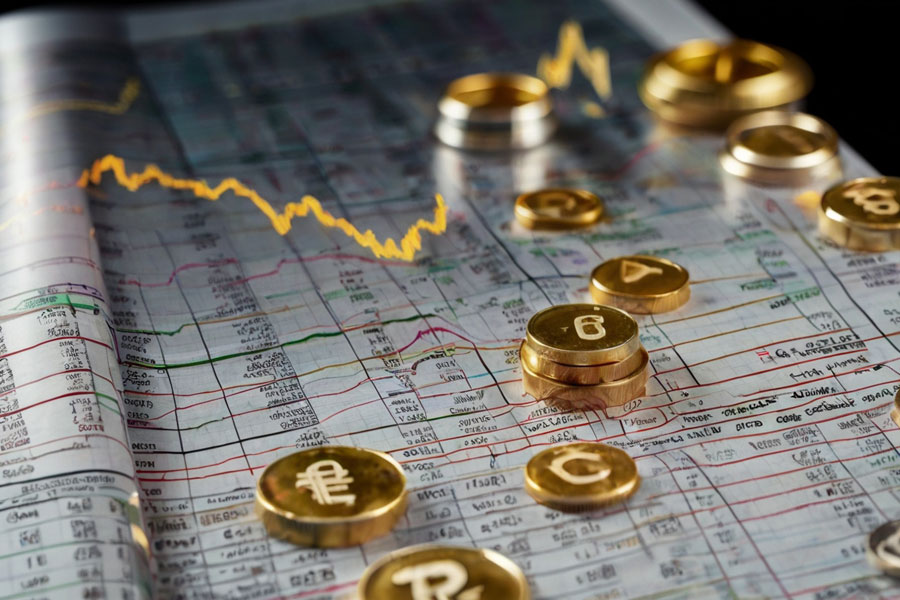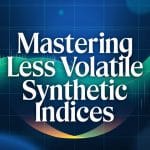Metal trading is a vital part of the commodities market, attracting a wide range of investors from seasoned traders to beginners looking to diversify their portfolios. Metals have long been considered a stable and profitable investment, offering a hedge against inflation and economic uncertainty. The key to successful metal trading lies in selecting the right metal, understanding market dynamics, and implementing effective trading strategies. This article delves into the best metals for trading, examining their characteristics, historical performance, and potential as investment options.
Types of Metals for Trading
Metals can be broadly classified into two categories: precious metals and industrial metals. Understanding the differences between these types can help traders make informed decisions based on their investment goals and market conditions.

Precious Metals
Precious metals are rare, naturally occurring metals with high economic value. They are often used in jewelry, coinage, and as a store of value. The most commonly traded precious metals include gold, silver, platinum, and palladium.
Industrial Metals
Industrial metals are widely used in manufacturing and construction due to their physical properties and availability. These metals include copper, aluminum, nickel, and zinc. Industrial metals are critical to the global economy and are closely tied to industrial and economic growth.
Gold
Historical Significance and Performance
Gold has been a symbol of wealth and power for centuries. It has been used as currency, jewelry, and a store of value. Gold’s unique properties, such as its resistance to corrosion and tarnish, make it highly valuable. Historically, gold has performed well during economic downturns, serving as a safe haven for investors.

Market Trends and Price Volatility
Gold prices are influenced by various factors, including geopolitical events, economic data, and central bank policies. During periods of economic uncertainty, gold prices tend to rise as investors seek safe assets. Conversely, in times of economic stability, gold prices may decrease as investors move towards higher-yielding assets.
Read More: Best XAU/USD Trading Strategy
Pros and Cons of Trading Gold
Pros:
- Safe Haven Asset: Gold is often considered a safe investment during economic instability.
- Liquidity: Gold is highly liquid, with a large and active market.
- Inflation Hedge: Gold often retains its value during inflationary periods.
Cons:
- Price Volatility: Gold prices can be volatile, influenced by multiple factors.
- No Yield: Unlike stocks or bonds, gold does not generate income.
Silver
Industrial and Investment Demand
Silver serves both industrial and investment purposes. It is used in various industries, including electronics, solar panels, and medical devices, due to its excellent conductivity and antibacterial properties. Additionally, silver is popular among investors for its lower price compared to gold, offering an accessible entry point for new traders.

Price Movements and Volatility
Silver prices are more volatile than gold due to its dual role in industry and investment. Industrial demand can significantly impact silver prices, making them sensitive to economic cycles. Additionally, silver’s smaller market size compared to gold can lead to larger price swings.
Advantages and Disadvantages of Trading Silver
Advantages:
- Affordability: Silver is more affordable than gold, making it accessible for small investors.
- High Demand: Industrial applications ensure steady demand for silver.
- Diversification: Silver can diversify a precious metals portfolio.
Disadvantages:
- High Volatility: Silver prices can experience significant fluctuations.
- Storage and Transportation: Physical silver requires secure storage and can be bulky.
Platinum
Rarity and Industrial Use
Platinum is one of the rarest precious metals, primarily used in industrial applications such as automotive catalytic converters, jewelry, and electronics. Its scarcity and diverse applications make it a valuable trading asset.

Historical Price Trends and Market Dynamics
Platinum prices are influenced by industrial demand, particularly from the automotive sector. Historically, platinum has traded at a premium to gold due to its rarity. However, economic downturns and changes in industrial demand can impact prices significantly.
Benefits and Risks of Trading Platinum
Benefits:
- Rarity: Platinum’s scarcity can drive up prices.
- Industrial Demand: Steady demand from industrial applications supports prices.
- Investment Diversification: Platinum offers diversification within the precious metals market.
Risks:
- Economic Sensitivity: Platinum prices are closely tied to industrial demand and economic conditions.
- Price Volatility: Prices can be volatile, influenced by market dynamics.
Palladium
Growing Demand in Automotive Industry
Palladium is primarily used in catalytic converters for gasoline engines, making it crucial to the automotive industry. Its demand has surged due to stricter emission regulations and the growing popularity of gasoline vehicles over diesel.
Price Trends and Market Volatility
Palladium prices have experienced substantial growth in recent years, driven by increasing demand and supply constraints. Its market is smaller than gold or silver, leading to higher price volatility.
Pros and Cons of Trading Palladium
Pros:
- Strong Demand: Increasing demand from the automotive industry supports prices.
- Investment Potential: Palladium’s unique market dynamics offer significant investment opportunities.
Cons:
- High Volatility: Palladium prices can be extremely volatile.
- Limited Market: The smaller market size can lead to liquidity issues.
Industrial Metals (Copper, Aluminum)
Role in Global Industries and Economies
Industrial metals like copper and aluminum are essential for various industries, including construction, electronics, and transportation. Their widespread use makes them critical indicators of economic health.
Market Trends and Price Stability
Industrial metal prices are closely tied to economic cycles. During periods of economic growth, demand for these metals increases, driving up prices. Conversely, economic slowdowns can lead to decreased demand and lower prices.
Advantages and Challenges of Trading Industrial Metals
Advantages:
- Economic Indicators: Industrial metals reflect economic health, providing valuable market insights.
- Diversification: Investing in industrial metals can diversify a portfolio.
- High Demand: Ongoing industrial and infrastructural needs ensure steady demand.
Challenges:
- Economic Sensitivity: Prices are highly sensitive to economic conditions.
- Supply Chain Issues: Disruptions in supply chains can impact prices.
Factors to Consider When Choosing a Metal for Trading
When selecting a metal for trading, it’s essential to evaluate various factors that influence market performance and profitability. Understanding these factors can help traders make informed decisions, optimize their trading strategies, and mitigate risks. Here are the key factors to consider:
Market Liquidity and Trading Volume
Market Liquidity: Metals with high liquidity, such as gold and silver, allow for efficient trading without significantly impacting prices. This liquidity ensures traders can enter and exit positions effectively.
- Gold: Highly liquid, with deep market depth facilitating large trades with minimal price impact.
- Silver: Offers good liquidity, suitable for traders balancing accessibility with volatility.
Trading Volume: Represents the total number of contracts or shares traded within a specific period, indicating market interest and influencing price discovery.
Price Volatility and Stability
Price Volatility: The rate of price change over time, indicating potential profit opportunities but also higher risks.
- Gold: Generally stable, influenced by macroeconomic factors and investor sentiment.
- Silver: Exhibits higher volatility due to its dual role as an industrial and precious metal.
- Palladium: Known for significant price fluctuations, requiring careful risk management strategies.
Price Stability: Desired by long-term investors seeking gradual appreciation without excessive turbulence.
Economic Indicators and Their Impact on Metal Prices
Economic Indicators: Provide insights into economic health and influence metal prices:
- GDP Growth: Boosts industrial metal demand (e.g., copper, aluminum).
- Inflation Rates: Gold is favored as a hedge against inflation.
- Interest Rates: Impact opportunity cost; lower rates can increase metal demand.
- Employment Data: Strong figures signal economic health, supporting industrial metal prices.
Geopolitical Factors and Their Influence on the Metal Market
Geopolitical events, such as trade wars, political instability, and regulatory changes, can have profound impacts on metal prices. These events can affect supply chains, market sentiment, and overall demand for various metals.
- Trade Wars: Tariffs and trade barriers can disrupt the supply of metals, leading to price volatility. For example, trade tensions between major economies can affect the availability and cost of industrial metals like aluminum and copper.
- Political Instability: Metals like gold often benefit from political instability as investors seek safe-haven assets. Regions experiencing political turmoil may see increased gold prices as investors move their assets to safer locations.
- Regulatory Changes: Environmental regulations and mining policies can impact the production and availability of metals. For instance, stricter emission standards can increase demand for platinum and palladium used in catalytic converters, driving up prices.
Supply and Demand Dynamics
Understanding the supply and demand dynamics of metals is crucial for predicting price movements. Supply constraints, such as mining disruptions or geopolitical restrictions, can lead to price spikes. Conversely, oversupply can drive prices down.
- Supply Constraints: Issues like labor strikes, natural disasters, or geopolitical tensions in major mining regions can restrict metal supply, causing prices to rise. For example, disruptions in South African platinum mines can significantly impact global platinum prices.
- Demand Trends: Technological advancements and industry trends can drive demand for specific metals. The growing use of silver in solar panels and electronics has increased its industrial demand, impacting its price.
Read More: Mastering the 5-3-1 Strategy
Technological Advancements and Innovations
Technological advancements can create new uses for metals, thereby altering demand dynamics. Innovations in renewable energy, electronics, and automotive industries can significantly influence the demand for metals like silver, lithium, and palladium.
- Renewable Energy: The rise of solar and wind energy has increased demand for silver and copper. Silver is used in photovoltaic cells, while copper is essential for electrical wiring and components.
- Electric Vehicles (EVs): The shift towards electric vehicles has boosted demand for metals like lithium (used in batteries) and palladium (used in catalytic converters). This trend is expected to continue, influencing future metal prices.
Currency Fluctuations
Since metals are often traded in U.S. dollars, currency fluctuations can impact their prices. A stronger dollar can make metals more expensive for foreign buyers, potentially reducing demand and lowering prices. Conversely, a weaker dollar can boost demand and increase prices.
- U.S. Dollar Index (DXY): Monitoring the strength of the U.S. dollar against other currencies can provide insights into potential price movements for metals. A declining dollar often correlates with rising metal prices.
Seasonal Trends
Some metals exhibit seasonal price patterns due to changes in industrial activity, weather conditions, and cultural practices. Understanding these trends can help traders anticipate price movements and adjust their strategies accordingly.
- Gold and Festivals: In countries like India, gold demand increases during festivals and wedding seasons, often leading to higher prices.
- Copper and Construction: Copper demand tends to rise during warmer months due to increased construction activity, which can drive up prices.
Speculative Activity and Market Sentiment
Speculative activity and market sentiment play a significant role in metal trading. Traders’ perceptions and actions can drive short-term price movements, often leading to price spikes or drops.
- Futures and Options Markets: Speculative trading in futures and options markets can amplify price movements. High open interest in metal contracts can indicate strong market sentiment and potential price volatility.
- Investor Behavior: Market sentiment, influenced by news, reports, and global events, can drive investor behavior. Positive news about economic recovery may boost industrial metal prices, while negative news can increase demand for safe-haven metals like gold.
Suitable Strategies for Trading Metals

Metal trading strategies play a crucial role in navigating the commodities market, offering tailored approaches for both long-term investors and short-term traders. Here are effective strategies for trading metals:
Long-Term vs. Short-Term Trading
Long-Term Trading: Long-term trading involves holding metals for extended periods, leveraging sustained price trends:
- Gold: Preferred for its historical role as a hedge against inflation and economic uncertainty. Factors like global economic health and interest rates influence long-term gold investors.
- Platinum: Valued for industrial applications, with insights drawn from automotive trends and emissions regulations.
Short-Term Trading: Short-term strategies capitalize on price volatility over shorter periods:
- Day Trading: Focuses on intraday price movements, requiring vigilance with market news and economic indicators.
- Swing Trading: Targets short-to-medium-term trends, using technical analysis for entry and exit points and fundamental analysis for broader market context.
Technical Analysis and Fundamental Analysis
Technical Analysis: Utilizes historical price charts and indicators to forecast price movements:
- Moving Averages: Identifies trend directions (e.g., SMA, EMA).
- Relative Strength Index (RSI): Measures price momentum for identifying overbought or oversold conditions.
- MACD (Moving Average Convergence Divergence): Indicates trend momentum through moving averages.
Fundamental Analysis: Assesses intrinsic metal value through economic indicators and geopolitical factors:
- Economic Indicators: GDP growth, inflation rates, and employment data influence industrial metal demand.
- Geopolitical Events: Trade policies and political stability impact supply chains and metal prices.
- Supply and Demand Dynamics: Production and consumption trends affect price forecasts (e.g., disruptions in mining activities).
Diversification Strategies
Diversification: Spreads investments across different metals to manage risk and optimize returns:
- Gold: Offers stability and hedging against economic uncertainties.
- Silver: Valued for industrial uses and investment demand.
- Copper: Reflects economic growth trends and industrial applications.
Risk Management Techniques
Risk Management: Critical for protecting against losses in metal trading:
- Stop-Loss Orders: Limits losses by automatically selling at predetermined prices.
- Leverage Management: Cautiously uses leverage to avoid significant losses.
- Position Sizing: Allocates portfolio portions to manage risk across trades.
- Regular Review: Adjusts positions based on market conditions and performance.
By implementing these strategies, traders can effectively navigate the complexities of metal trading, optimize performance, and achieve their investment objectives in the commodities market.
Conclusion
Selecting the best metal for trading depends on various factors, including market liquidity, price volatility, economic indicators, and geopolitical events. Gold remains a popular choice for its safe-haven status, while silver offers affordability and industrial demand. Platinum and palladium provide unique opportunities linked to industrial applications, particularly in the automotive sector. Industrial metals like copper and aluminum reflect broader economic trends and offer diversification opportunities. By understanding the characteristics and market dynamics of different metals and implementing suitable trading strategies, investors can make informed decisions and enhance their trading success.
In the ever-evolving world of metal trading, staying informed and adaptable is key. Whether you are a seasoned trader or a newcomer, thorough research and a strategic approach will help you navigate the complexities of the metal market and achieve your investment goals.
What are the best metals to trade in forex for beginners?
For beginners, gold and silver are often recommended due to their high liquidity and well-established market presence. Gold offers stability and lower volatility, making it a safer choice for new traders. Silver, while more volatile, provides more trading opportunities at a lower cost.
How does the industrial demand for metals affect their trading prospects?
Industrial demand significantly impacts the prices of metals like silver, platinum, and palladium. Economic cycles, technological advancements, and changes in industry standards can lead to price fluctuations, creating trading opportunities based on fundamental analysis of industrial trends.
Can metals be traded 24/5 in the forex market?
Yes, metals can be traded 24/5 in the forex market, similar to currency pairs. This round-the-clock trading allows traders to respond to global events and market developments at any time, providing flexibility and continuous trading opportunities.
What role does geopolitical instability play in metal trading?
Geopolitical instability often drives investors towards safe-haven assets like gold, leading to price increases. Understanding geopolitical events and their potential impact on metal prices can help traders make informed decisions and capitalize on market movements.













